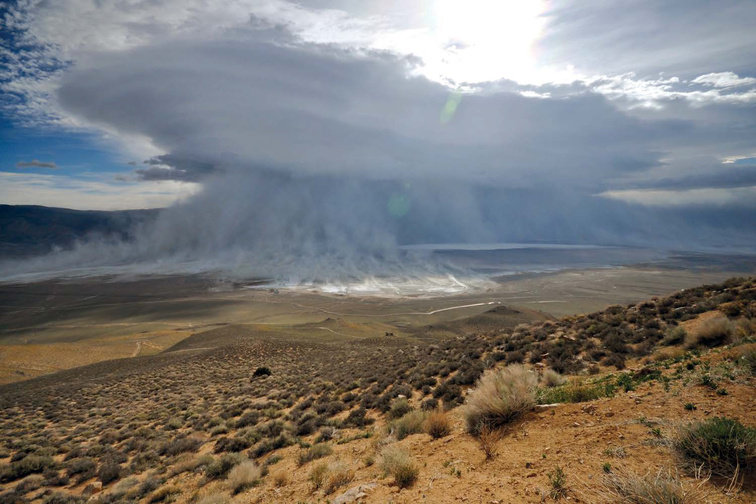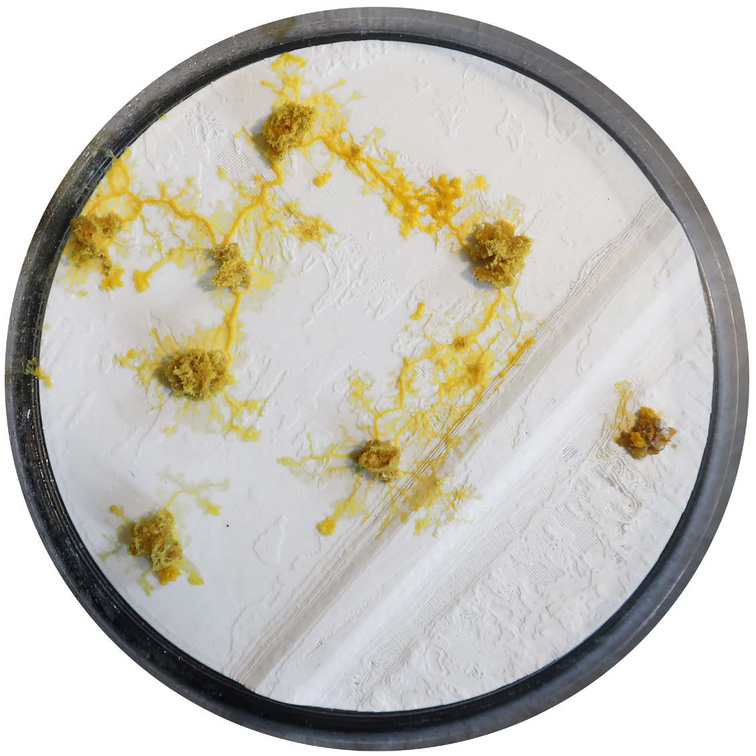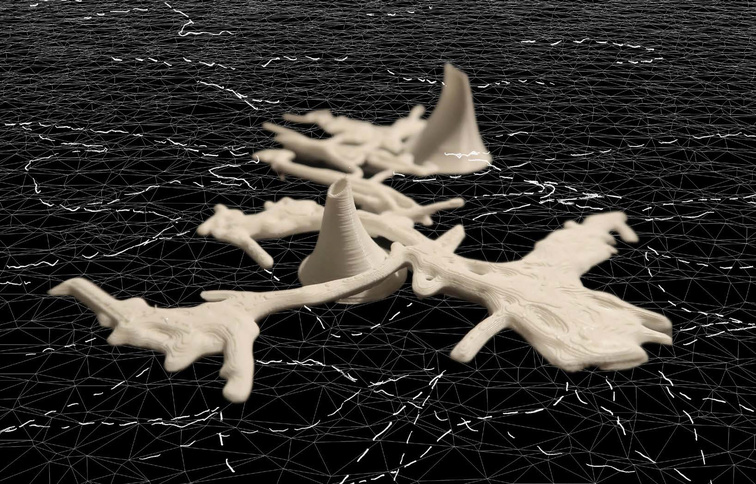Bio-Hybrid Landscape – the relation between artificial soil, machine and organic matter
How can new technologies and biology can merge to create new types of natural experiences?
The project originates from a human-made alteration of a natural lake in California, USA. A century ago, the water in Owens Lake, 300 km north of Los Angeles, was diverted to the drinking-water aqueduct supplying the city of Los Angeles.
Several problems arose from this, one being that Owens Lake almost dried out, becoming the largest single source of dust pollution in the United States with profound consequences for local residents and biological diversity.
By designing landscape-altering systems to enable the restoration of natural surroundings, even after human interference, the project provides a solution for how new technologies and biology can merge to create new types of natural experiences. The project aims to lay the groundwork for a new eco-system which works to process an Anthropocene landscape to such an extent that the design actively enters the process by examining infrastructural changes in the way we manage our natural resources.







